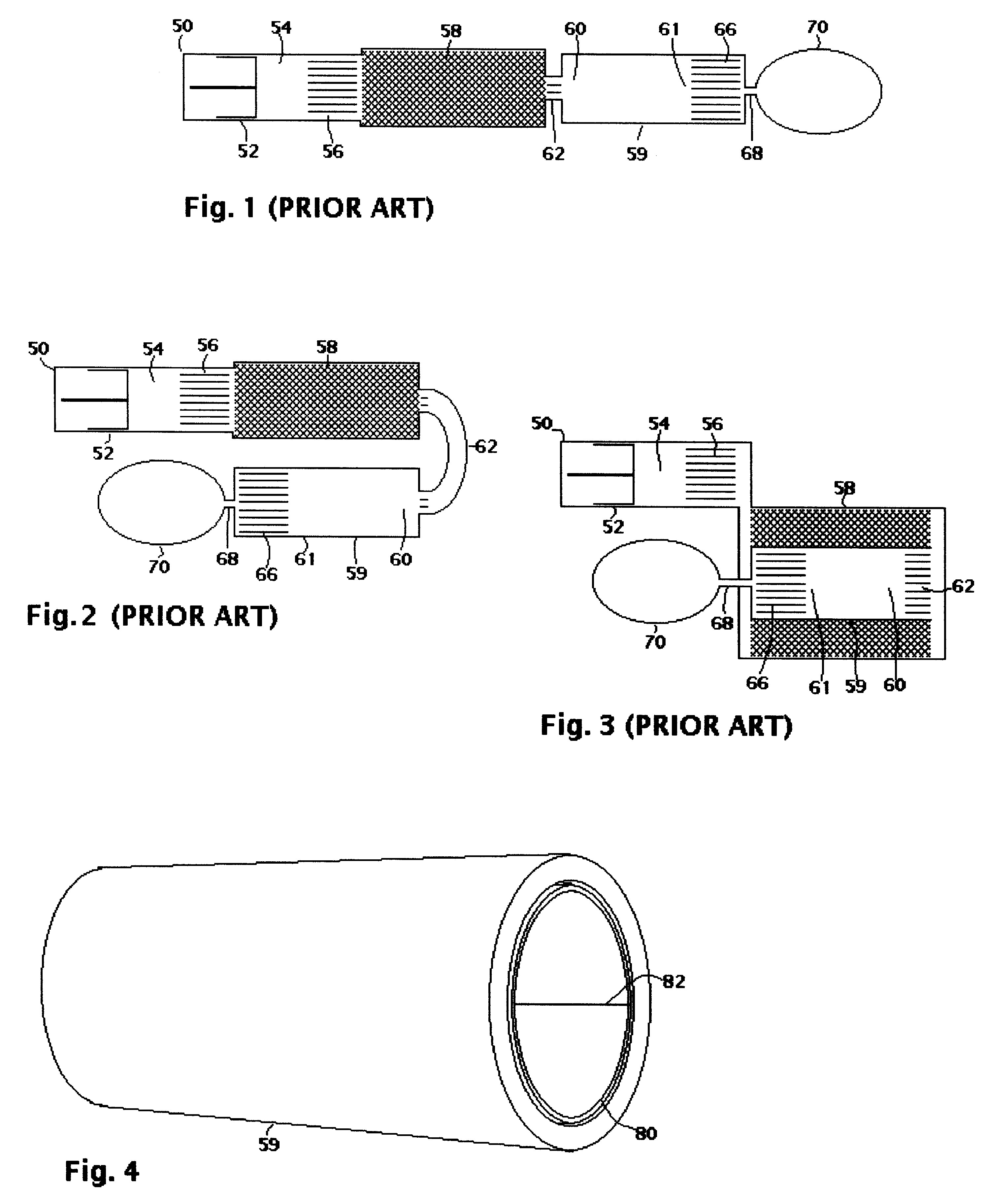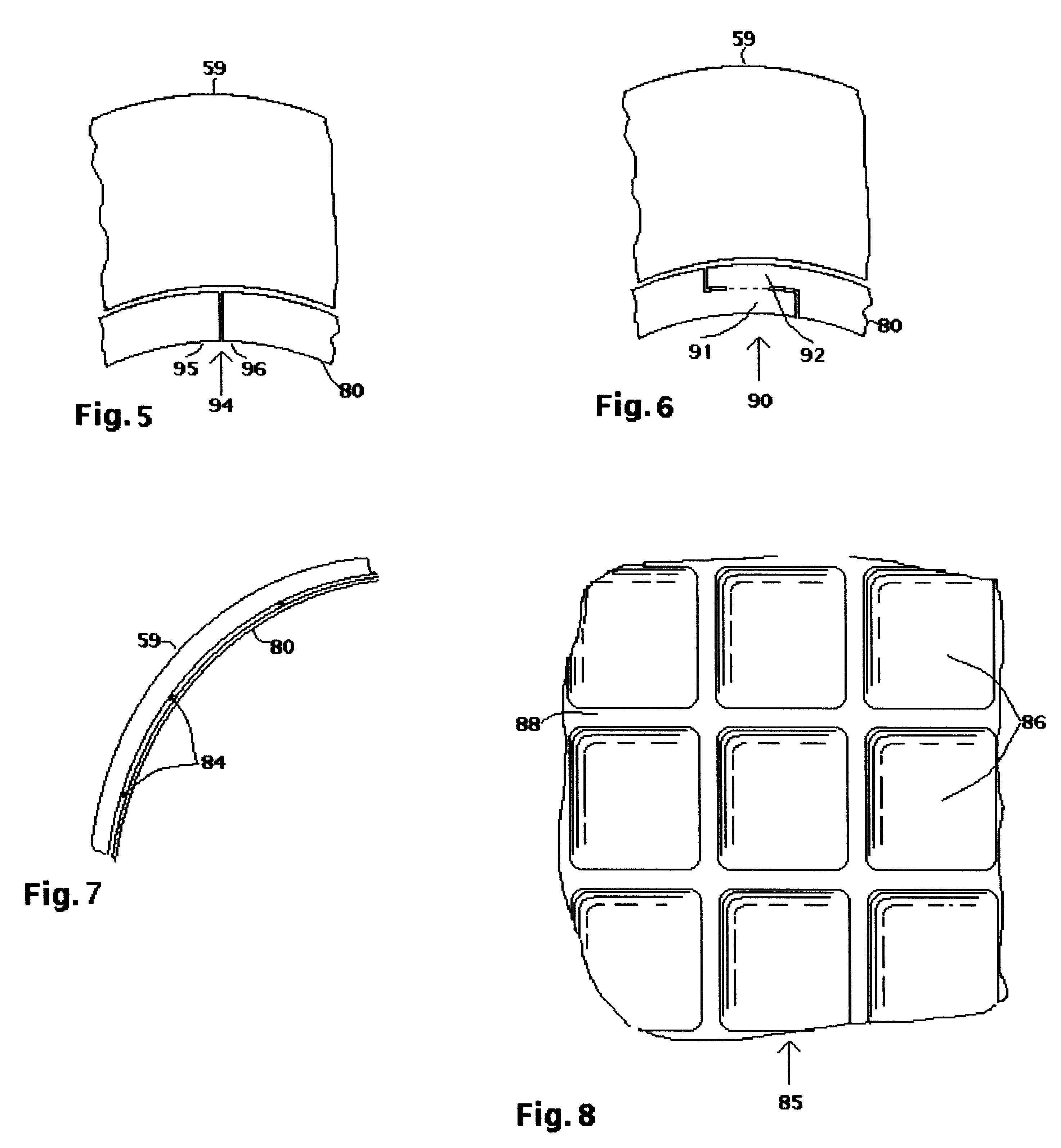Pulse tube liner
a technology of pulse tube and liner, which is applied in the direction of gas cycle refrigeration machines, refrigeration machines, lighting and heating apparatus, etc., can solve the problems of low heat capacity and poor heat transfer between the liner and the wall of the pulse tube, and achieves relatively good heat transfer between the fluid and the liner, and low heat capacity. , the effect of low heat capacity
- Summary
- Abstract
- Description
- Claims
- Application Information
AI Technical Summary
Benefits of technology
Problems solved by technology
Method used
Image
Examples
Embodiment Construction
In a preferred embodiment of this invention, shown in FIG. 4, a layer of liner 80 is installed in pulse tube 59, which may be a pulse tube of a linear pulse tube refrigerator as shown in FIG. 1, a U-tube pulse tube refrigerator as shown in FIG. 2 or a coaxial pulse tube refrigerator as shown in FIG. 3. Pulse tube 59 may be of any material. Pulse tube 59 will typically have a wall thickness of 0.15 mm or greater. Liner 80 will typically have a maximum thickness of about 0.055 mm or less. Joint 82 in FIG. 4 may be a butt joint as shown in FIG. 5 or a welded joint as shown in FIG. 6. Alternatively, a tube of similar thickness formed by any other process, would be equivalent. For lowest cost, liner 80 may be smooth stainless steel or titanium foil. Alternatively, where higher cost is justified, liner 80 may be recessed foil, preferably fabricated from 0.0254 mm 316 L stainless steel, full hard, or 0.0305 mm titanium foil etched in the pattern shown in FIG. 8, with foil in indented reces...
PUM
 Login to View More
Login to View More Abstract
Description
Claims
Application Information
 Login to View More
Login to View More - R&D
- Intellectual Property
- Life Sciences
- Materials
- Tech Scout
- Unparalleled Data Quality
- Higher Quality Content
- 60% Fewer Hallucinations
Browse by: Latest US Patents, China's latest patents, Technical Efficacy Thesaurus, Application Domain, Technology Topic, Popular Technical Reports.
© 2025 PatSnap. All rights reserved.Legal|Privacy policy|Modern Slavery Act Transparency Statement|Sitemap|About US| Contact US: help@patsnap.com



